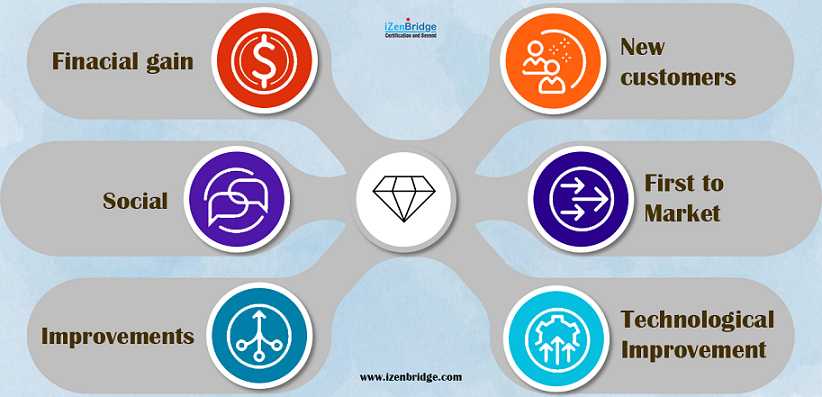

The importance of business value in project management cannot be overstated. As the Project Management Institute’s (PMI) principle number 10 suggests, focusing on value is crucial in every aspect of a project. The PMP exam content outline includes a section on business value, highlighting its significance in the project management profession. In this article, we will explore the concept of business value, discuss its importance in project management, and provide practical tips for PMP exam candidates.
PM : Principle 10 : Focus on Value
Understanding Business Value
Business value, while seemingly straightforward, can be quite nuanced. Different stakeholders within a business may assign different values to various aspects of a project. For example, a sales team may prioritize revenue generation, while a support team might value the ease and speed of product or service support. In essence, business value refers to the net quantifiable benefit (tangible and/or intangible) identified from a business endeavor.
Identifying Business Value
Before initiating a project, it is crucial to identify and estimate the expected benefits or business values. This process typically occurs during the concept stage of a project. Complex projects may have multiple business values, such as:

Examining and Prioritizing Business Value
When multiple business values are involved, different stakeholders may have different priorities. The project manager plays a vital role in aligning stakeholders on the expected business values and managing any necessary trade-offs. To achieve this, the project manager should:
Example of Business Value Baselines
| Value | Description | Baseline Expectations |
|---|---|---|
| Financial Gain | The tangible monitory benefits received by the organization | Net Present Value (NPV) of 10 Million USD Payback Period less than 2 years |
| Employee Satisfaction | As calculated currently using the employee survey | Minimum Increase of 10% expected in next two years. |
Establishing Agreement on Ownership for Ongoing Benefit Realization
While the project manager plays a crucial role in ensuring the realization of benefits through the achievement of project objectives, it is important to recognize that value realization often involves various parts of an organization. The entire value delivery system contributes significantly to value realization. As a project manager, it is essential to establish clear agreements on the processes for documenting and tracking benefit realization.
Stakeholders from the Project Management Office (PMO) or portfolio group are highly likely to play a leading role in documenting and tracking benefit realization. Business value may initially be documented in the business case and later tracked through an ongoing benefit realization system. The project manager should ensure that these values are properly documented and that all relevant stakeholders are aligned with the ownership and tracking of ongoing benefit realization.
Ensuring a Measurement System is in Place to Track Benefits
Project managers must ensure that an effective measurement system is in place to track project benefits. Often, these systems are established at the organizational or portfolio level. If certain project-specific benefits are not covered by the existing measurement system, the project manager should collaborate with relevant stakeholders to establish appropriate metrics for these benefits.
In project management terminology, these metrics are often referred to as Outcome Metrics. Some common examples include:
Project managers should identify and track outcome metrics at various milestones throughout the project. Additionally, they should establish a system for data collection and overall measurement to ensure that project benefits are effectively monitored and reported.
Evaluating Delivery Options to Demonstrate Value
In an uncertain and complex world, one of the most effective ways to mitigate risk is by implementing short feedback cycles. This approach allows for early identification of issues and accelerates the realization of benefits. As a project manager, it is essential to continuously explore opportunities for delivering business value early and frequently.
An incremental development approach offers several advantages, including:
By considering various delivery options and focusing on those that demonstrate value most effectively, project managers can better align their projects with stakeholder expectations and achieve more successful outcomes.
Keeping Stakeholders Informed on Value Gain Progress
Maintaining regular communication with stakeholders to review business value progress is essential for effective project management. In a predictive lifecycle, this is typically achieved through milestone reviews, while in adaptive environments, more frequent iteration review meetings are conducted.
Stakeholders are often better equipped to assess value than the project team, and any necessary changes or decisions can only be made with their continuous engagement. As a project manager, it is crucial to ensure that project reviews not only focus on evaluating progress against the plan but also emphasize value delivery assessment. This approach enables the project team to determine whether a change in direction is needed to maximize value realization.
By fostering open communication and collaboration with stakeholders, project managers can keep them informed of value gain progress and make any necessary adjustments to ensure that project goals are met and benefits are realized.

In conclusion, the importance of business value in project management is paramount. As highlighted by PMI’s principle number 10 and the PMP exam content outline, focusing on value is crucial in all aspects of a project. This article has explored the concept of business value, its significance in project management, and provided practical insights for PMP exam candidates. By understanding, identifying, and prioritizing business value, as well as establishing agreements, ensuring effective measurement systems, evaluating delivery options, and maintaining open communication with stakeholders, project managers can maximize value realization and drive successful project outcomes. Embracing these principles and practices will not only benefit PMP exam candidates but also contribute to their long-term success as project management professionals.
| Name | Date | Place | – |
| PMP Certification and Training | 17 July – 15 Aug 2025 | Bangalore | More Details |